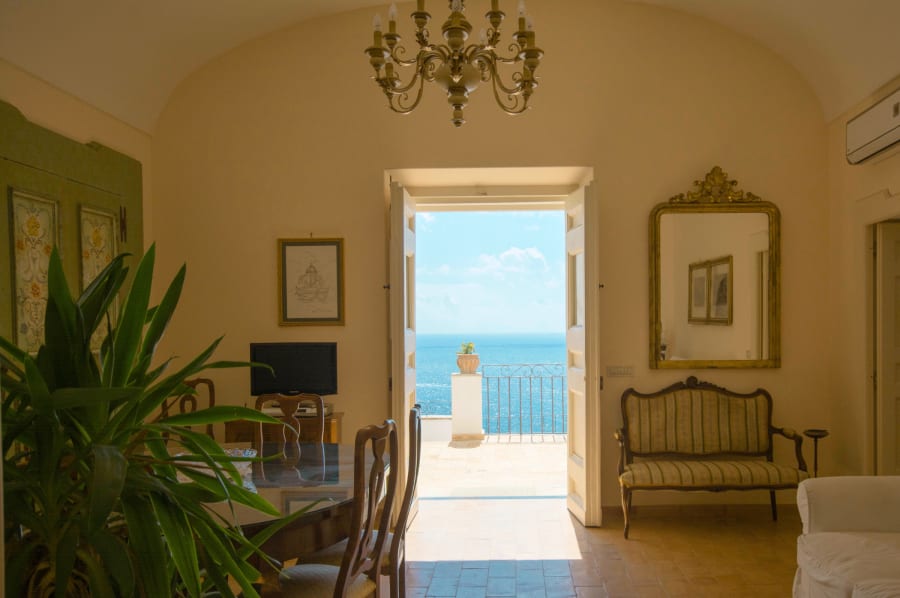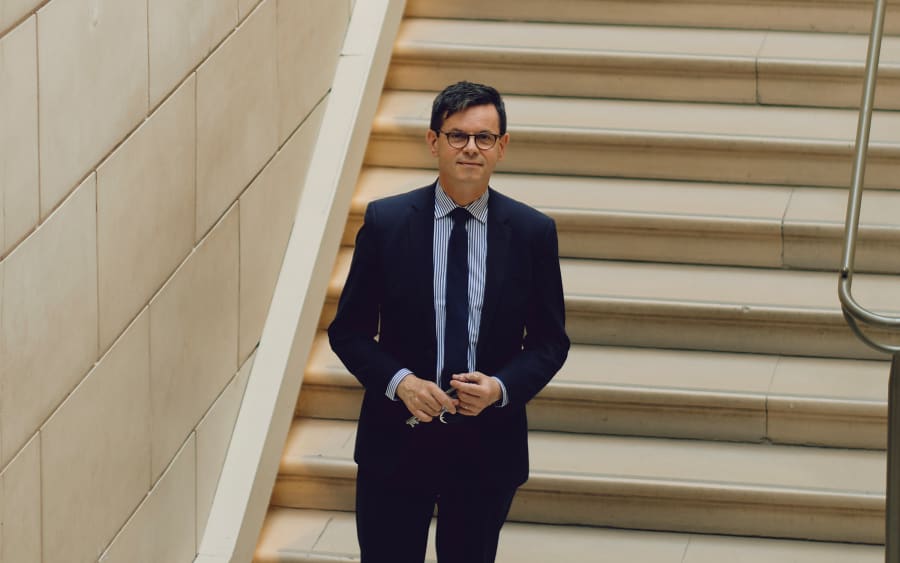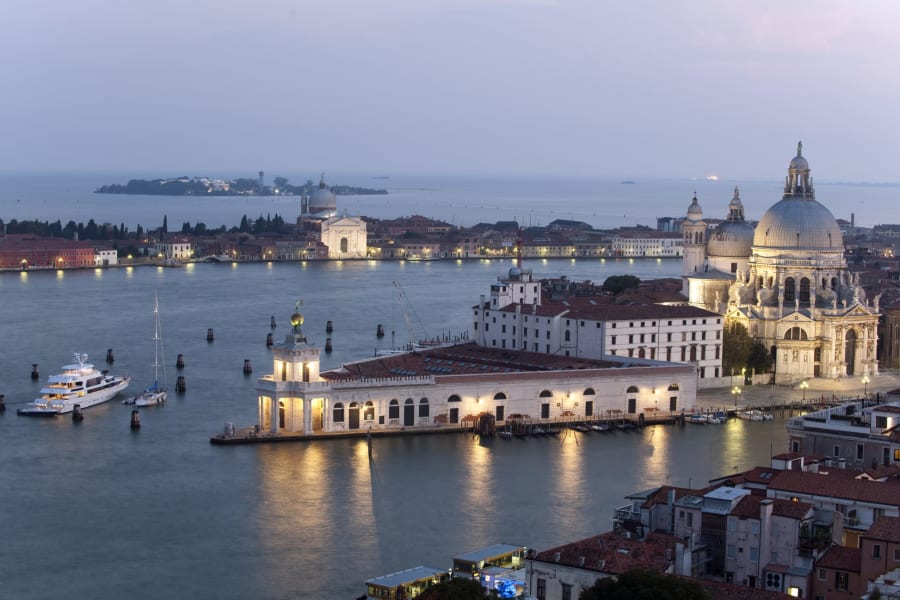從遍佈潮流店鋪與熱鬧酒吧的南城(Södermalm)鵝卵石街道,到風景如畫的Värmdö島,斯德哥爾摩的藝術生態系統曾一度被這座城市久負盛名的設計與音樂所掩蓋,而如今卻已在國際藝術舞台上佔據一席之地。在擁有海量國際藏品的公共機構與私人博物館的大力支援下,再加上藝廊與藝術家主導的創意項目,斯德哥爾摩憑藉其分佈於瑞典東南海岸數百座小島的獨特城市格局與完善的基礎設施,為當代藝術的蓬勃發展提供了別具一格的土壤。
自1958年於船島(Skeppsholmen)開館以來,現代美術館(Moderna Museet)一直是瑞典當代藝術的核心。館內永久藏品陣容強大,涵蓋馬塞爾.杜象(Marcel Duchamp)、希爾瑪.阿夫.克林特(Hilma af Klint)、路易絲.布爾喬亞(Louise Bourgeois)、多蘿西婭.坦寧(Dorothea Tanning)和Tora Vega Holmström等大師的作品,並且格外注重女性主義與觀念藝術,堪稱斯堪地納維亞藝術機構的標準。近期展覽包括南.戈丁(Nan Goldin)、艾薩克.朱利安(Isaac Julien)以及瑞典藝術家兼活動家Siri Derkert的回顧展。當前展覽為已故美國觀念藝術家邁克.凱利(Mike Kelley)的回顧展「host and Spirit」,該展覽是來自泰特現代美術館(Tate Modern)的巡迴展,展期至2025年10月12日。此外,聚焦薩米文化的藝術家布里塔.馬拉卡特-拉巴(Britta Marakatt-Labba)展覽將於今年夏末開幕,展期為2025年6月14日至11月9日。
從現代美術館乘船出發,很快即可抵達斯德哥爾摩著名的影像藝術中心Fotografiska,它坐落於一座紅磚新藝術風格的前海關大樓內。自2010年開館以來,Fotografiska已將影響力拓展至全球,在柏林、塔林和紐約設有影像藝術中心。該館以舉辦高規格、大規模的展覽而聞名,過往熱門展覽包括南非知名攝影師扎內勒.穆霍利(Zanele Muholi)的專題展,以及美國攝影師安德烈斯.塞拉諾(Andres Serrano)的作品展。每月,Fotografiska還會向那些平常難以接觸藝術與文化的人群發放一千張免費入場券。
在Vasastan島上,Sven-Harrys藝術博物館(Sven-Harrys Konstmuseum)以其光滑的金色外立面為背景,為訪客提供了一種更為私密的觀賞體驗。這座私人博物館將自己定位為藝術與人類共同的家園,其建築內不僅設有藝廊和博物館商店,還包括公寓與商業空間,屋頂部分則複刻了創辦人Sven-Harry Karlsson的故居。館內陳列著瑞典最大型的私人藝術收藏之一,歷經35年積累,藏品涵蓋了Carl Fredrik Hill、海倫.謝爾夫貝克(Helene Schjerfbeck)、Ylva Snöfrid和Dan Wolgers的畫作,它們被置於家居環境中展示,周圍環繞著Gio Ponti和Georg Haupt設計的傢俱,以及Märta Måås-Fjetterström製作的精美地毯。博物館曾為包括Azzedine Alaïa在內的藝術家與時裝設計師舉辦過專題展覽,目前正在舉辦瑞典藝術家Dick Bengtsson(1936-1989)的個展,以及群展「Where We Are」。
位於城市南部的Färgfabriken坐落於Liljeholmen水邊的一處廢棄工業園區內。這個由基金會運營的藝術空間,以極簡主義風格的展廳為特色,將自身定位為藝術、建築和社會研究的交匯點。自1990年代創立以來,這裡舉辦過豐富多彩的項目,包括影響藝術回顧展、表演、城市議題跨學科研討會,甚至是跳蚤市場。2020年秋季,藝術家團體Gylleboverket在Färgfabriken安裝了一件名為「Symbiosis」的場域特定作品,引發了研究人員、藝術家與建築師之間的跨學科對話,探討各自在實踐中對「共生」主題的理解。2021年秋季,這裡又舉辦了第二次展覽,展示了對「共生」主題的多樣化詮釋。如今,Färgfabriken已成為瑞典首都不可或缺的跨領域藝術交流場所。
Liljevalchs位於動物園島(Djurgården),靠近ABBA博物館(ABBA museum),建築宏偉壯觀,是瑞典最古老的公共藝術空間之一。每年,這裡都會舉辦備受矚目的春季沙龍「Vårsalongen」,這是一場對18歲以上公眾開放的年度評審展覽,以沙龍式展陳方式呈現,吸引了眾多觀眾。近年來,Liljevalchs頻繁舉辦備受讚譽的藝術回顧展,最近展出的是瑞典標誌性畫家瑪瑪.安德森(Mamma Andersson)的作品。在斯德哥爾摩藝術周(Stockholm Art Week)期間,這裡還成為當地市場藝術博覽會(Market Art Fair)的舉辦地。
海灣對岸,私人資助的Artipelag美術館隱匿於松林之中,靜卧在Värmdö島寧靜的水畔。這座美術館由已故建築師Johan Nyrén設計,與周圍自然環境融為一體,宛如天成。這裡為遊客提供了一方暫離城市喧囂的靜謐天地,也以高品質的展覽吸引眾人駐足。例如,2020年的「Signature Women」展覽系統回顧了過去一個世紀瑞典女性藝術家的創作;2015年的攝影展則通過丹麥雕塑家Olafur Eliasson和德國藝術家安德烈亞斯.古爾斯基(Andreas Gursky)的作品,深入探討土地與水域的關係。目前,美術館正在舉辦瑞典時裝設計師Lars Wallin的回顧展。
此外,斯德哥爾摩匯集了多家具有影響力的商業藝廊。其中,成立於1991年的Andréhn-Schiptjenko藝廊為瑞典藝術家走向國際舞台發揮了關鍵作用,代理藝術家包括Cajsa von Zeipel與Annika Elisabeth von Hausswolff。其在巴黎開設的第二間藝廊進一步加深了斯德哥爾摩與歐洲藝術界的聯繫。另一間具有國際影響力的藝廊是Galerie Nordenhake,它在斯德哥爾摩、柏林和墨西哥城均設有空間,經常在巴塞爾藝術展上呈獻強勁的藝術家陣容,涵蓋北歐與國際知名創作者,如Sophie Reinhold、Christian Andersson、Elena Damiani和林立施(Lap-See Lam)。
Sofia Hallström是一位常駐倫敦的作家和藝術家。
斯德哥爾摩藝術周於2025年5月13日至18日舉行。
頁頂圖片標題:斯德哥爾摩,照片由Martin Brusewitz為巴塞爾藝術展拍攝


